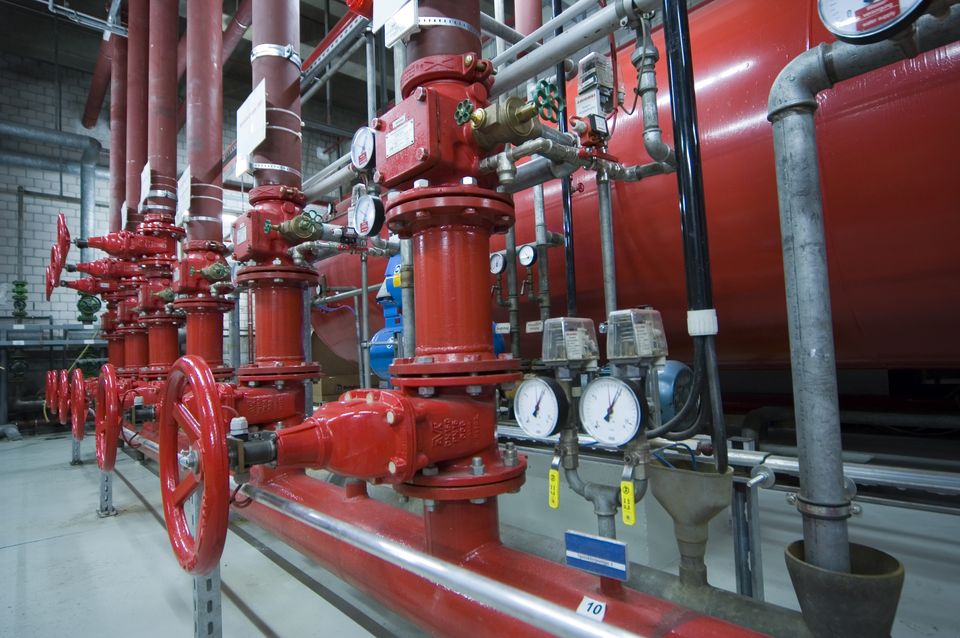Are you trying to find related information on 4 Ways to Troubleshoot Low Water Pressure?

Low tide stress in your home can be a frustrating issue, affecting whatever from showering to washing meals. If you're experiencing weak water circulation, there are numerous feasible causes and options to discover. In this overview, we'll go over usual reasons for low tide pressure and practical actions to address the concern efficiently.
Introduction to Low Water Stress
Low water pressure happens when the circulation of water from your faucets, showers, and various other components is weak than common. This can make daily tasks a lot more difficult and much less effective. Comprehending the root causes of low tide stress is vital to discovering the appropriate option.
Typical Sources Of Low Tide Stress
Pipeline Obstructions
With time, pipes can end up being blocked with natural resource, sediment, or particles, restricting the circulation of water. This is an usual problem in older homes with galvanized steel pipes.
Rust
Corrosion within pipes can result in leakages and lowered water stress. Corrosion accumulation can tighten water flow, especially in maturing plumbing systems.
Faulty Stress Regulatory Authorities
Stress regulatory authorities are in charge of maintaining constant water pressure in your home. If they malfunction, it can cause low water pressure or uneven circulation throughout your home.
Municipal Water System Issues
Occasionally, the trouble exists outside your home. Community water supply concerns, such as main line leakages or upkeep work, can temporarily decrease water pressure in your area.
Exactly How to Diagnose Low Water Pressure
Examining Faucets and Components
Begin by checking the water pressure at different taps and components throughout your home. If the issue is separated to details locations, it may show local problems.
Examining Pipes
Check visible pipelines for signs of leakages, rust, or clogs. Pay attention to any kind of unusual noises, such as banging or rattling pipes, which can suggest issues within the plumbing system.
Consulting with a Plumber
If you're not able to identify the reason for low water pressure, consider employing a professional plumber to conduct a complete evaluation. They can recognize underlying issues and advise suitable remedies.
DIY Solutions to Repair Low Water Pressure
Cleansing Aerators and Showerheads
Natural resources can collect in aerators and showerheads, lowering water circulation. Remove and clean these elements consistently to boost water pressure.
Flushing Water Heater
Sediment buildup in the water heater can restrict flow and decrease effectiveness. Flushing the container occasionally aids eliminate debris and keep ideal efficiency.
Inspecting Stress Regulatory Authority
Guarantee that the stress regulator is functioning appropriately. Adjusting or changing the regulatory authority can help recover correct water pressure throughout your home.
Cleaning Clogs in Pipes
For small blockages, attempt making use of a plumbing serpent or chemical drain cleaner to clear blockages in pipes. Be cautious when using chemicals and adhere to security standards.
When to Call a Professional Plumber
If do it yourself efforts fall short to resolve the concern or if you presume significant plumbing problems, it's best to look for aid from an accredited plumber. They have the experience and devices to resolve intricate problems safely and efficiently.
Safety Nets to Preserve Water Pressure
Routine Upkeep
Arrange routine upkeep for your plumbing system to avoid issues such as corrosion, leakages, and blockages. Dealing with minor troubles early can aid stay clear of even more significant repair services later on.
Installing a Pressure Booster
Think about installing a stress booster pump to improve water stress in locations with constantly low flow. This can be particularly useful for multi-story homes or buildings with high-demand fixtures.
Monitoring Water Usage
Be mindful of water use practices and prevent ill-using the plumbing system. Easy changes, such as incredible showers and laundry lots, can assist keep adequate water stress.
Conclusion
Taking care of low water stress can be irritating, yet recognizing the underlying causes and executing appropriate remedies can restore optimal circulation throughout your home. Whether it's cleansing aerators, checking pipelines, or consulting with a plumber, taking positive actions can guarantee a consistent supply of water for your day-to-day requirements.
FOUR WAYS TO FIX LOW WATER PRESSURE NOW
Turning on a shower or faucet only to find the water comes out in a sad, slow drizzle is never a good feeling. How exactly are you supposed to wash a pan or take a quick shower when it takes 10 minutes just to rinse off a little soap? The good news is that when your water pressure is bad, there's always a cause: typically one that can be easily fixed. Here are some of the most common causes of low pressure and what you can do to fix the issue:
DEBRIS AND MINERAL DEPOSIT BUILDUPS
If you notice low water pressure from just one or two of the fixtures in your house, the problem likely has to do with debris buildup. Water is full of minerals and other debris, all of which can accumulate in your pipes and on your fixtures. This can cause a blockage that affects how much water flows through. To fix this, try filling a small plastic bag with white vinegar, and use a rubber band to hang it around your showerhead or faucet. Let the head of the fixture soak for a few hours, and the vinegar should loosen the deposits.
WATER LEAKS
Leaks are another common cause of low water pressure. If water is flowing out of your plumbing through a hole or crack before it can reach your fixture, the pressure coming out of the faucet or showerhead will be lower. A plumbing professional is your best bet for finding and repairing a leak in your water supply pipes.
Leaks are another common cause of low water pressure. If water is flowing out of your plumbing through a hole or crack before it can reach your fixture, the pressure coming out of the faucet or showerhead will be lower. A plumbing professional is your best bet for finding and repairing a leak in your water supply pipes.
FOUR WAYS TO FIX LOW WATER PRESSURE NOW
Turning on a shower or faucet only to find the water comes out in a sad, slow drizzle is never a good feeling. How exactly are you supposed to wash a pan or take a quick shower when it takes 10 minutes just to rinse off a little soap? The good news is that when your water pressure is bad, there's always a cause: typically one that can be easily fixed. Here are some of the most common causes of low pressure and what you can do to fix the issue:
DEBRIS AND MINERAL DEPOSIT BUILDUPS
If you notice low water pressure from just one or two of the fixtures in your house, the problem likely has to do with debris buildup. Water is full of minerals and other debris, all of which can accumulate in your pipes and on your fixtures. This can cause a blockage that affects how much water flows through. To fix this, try filling a small plastic bag with white vinegar, and use a rubber band to hang it around your showerhead or faucet. Let the head of the fixture soak for a few hours, and the vinegar should loosen the deposits.
WATER LEAKS
Leaks are another common cause of low water pressure. If water is flowing out of your plumbing through a hole or crack before it can reach your fixture, the pressure coming out of the faucet or showerhead will be lower. A plumbing professional is your best bet for finding and repairing a leak in your water supply pipes.
Leaks are another common cause of low water pressure. If water is flowing out of your plumbing through a hole or crack before it can reach your fixture, the pressure coming out of the faucet or showerhead will be lower. A plumbing professional is your best bet for finding and repairing a leak in your water supply pipes.
A VALVE ISSUE
If you have low water pressure throughout your home, check your main shut-off valve to make sure it's completely open. You may also want to see if there's a pressure-reducing valve installed. If there is, have a plumber help you adjust the settings to get the pressure you're looking for.
OTHERS USING WATER
Believe it or not, your low water pressure could be caused by your neighbors. If you notice low pressure at certain times of day, it may be because you and the people living next to you have similar schedules - when everyone is showering at the same time, the pressure will be lower in every home. Low pressure throughout the neighborhood may also be caused by an issue with your municipal water supply. If that's the case, call the supplier to see if they're working on the issue.
https://www.rotorooter.com/blog/water-leaking/low-water-pressure-fixes/

I came across that article about 9 Reasons for Low Water Pressure in Your House when doing a search on the web. Sharing is caring. You just don't know, you may be doing someone a favor. Many thanks for going through it.
Call